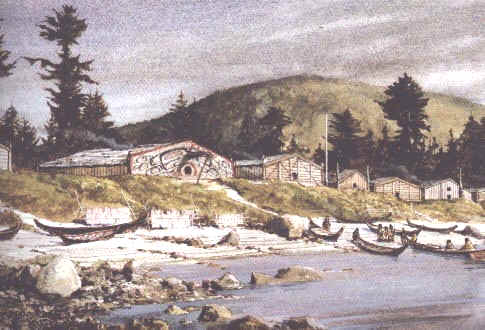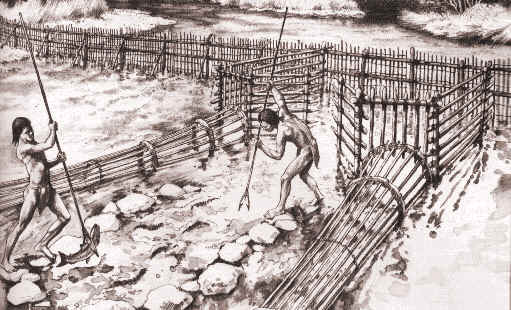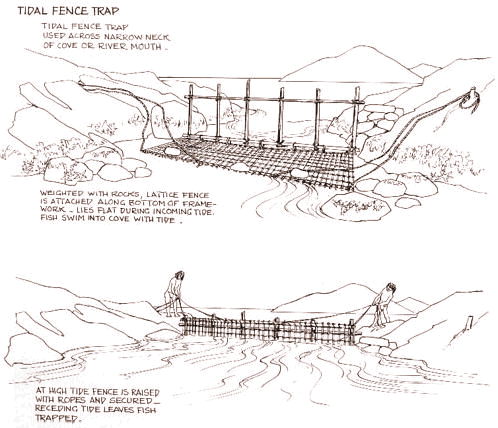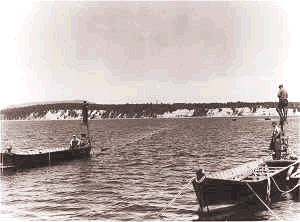|
The Northwest Culture depended on the forests for their shelter. Every home was made of wood, and the whole village pointed toward the water, whether it was a river, a quiet bay, or the ocean. Along the beach were the canoes, covered with bark matting or branches to protect them from the weather. In the back of the house were wooden racks that dried fish, wooden sheds for smoking fish, and storage sheds. The homes themselves were quite large. They were built for more than one family. The houses were built with frames of large trees. These were then covered with wooden planks that overlapped to keep out the wet weather. There were no windows, but there was a hole in the roof that let in air. |
|||
 |
|||
|
When the first Europeans arrived in Deer Harbor they found a Coastal Indian encampment along the slough which connects the shallow inner basin with the main harbor. Their split cedar long houses measured 100’ by 20’. Each housed three generations of a tribal clan. These peace loving Coastal Indians spent their time fishing, hunting and gathering plants, which they preserved by roasting or drying for winter use. Rows of dugout cedar canoes were drawn up on the shore in front of the long houses. |
|||
 |
|||
|
The Coastal Indians would put a wooden trap with small holes across the stream or river. This would allow the water to flow through, but would trap the salmon. |
|||
|
|||
|
Another kind of trap was the tidal weir. These weirs worked on the principle that fish would move with the high tide, and then get trapped in the weir when the tide went back out again. |
|||
|
|||
|
Other tidal weirs were built of rocks and stakes that trapped the fish on dry land or in pools when the tide went out. |
|||
|
|||
|
Henry Thomas Cayou, oldest son of Louis and Mary Anne Cayou, one of Orcas Island's most prominent citizens. Perhaps the State's most successful fisherman. He pioneered the use of fish traps and made and lost fortunes in the cannery business in Deer Harbor. He served 27 years as a San Juan County commissioner, was a school board member and helped establish Orcas Power and Light Company. |
|||
|
|||
|
Still in use today in the San Juan Islands Reef nets are designed to lay flat on the bottom, while attached to the boat. A spotter is placed in a high position on the boat, watching for fish activity. When this spotter thinks the time is right, the boat then pulls the net up, entrapping the fish. |
|||
|
Remains of old reef net boats still lie along the Lagoon. Photo taken February 23, 2003 |
|||
|
Questions about Deer Harbor History? Contact the Connors Click Here to Email the Connors Telephone 360-376-2480 |
|||






